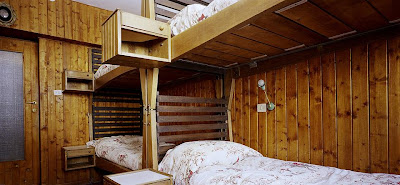If you think modernity is all about white plaster boxes or big sheets of glass, Carlo Mollino would probably tell you no. Born in Turin in 1905, Mollino worked mostly locally in northwestern Italy and remained isolated from the design establishment. His eccentric personality left his work somehow enigmatic, deviating from the dominant Italian Rationalism of the time. The retrospective at Haus der Kunst in Munich successfully captured the idiosyncrasy of Mollino’s oeuvre, presenting his multi-faceted work as an alternative “Maniera Moderna.”
Hybrid style
Although trained as an architect in the 1920s, when “Gruppo 7” published their Rationalist manifesto, Mollino was more interested in the irrational. “There are no reasons,” he once wrote, “If there were, we would have a way to build a convenient machine for making art through logic and grammar.” Instead of high modern purity, he turned to Surrealist montage methods and got inspirations from Alvar Aalto’s regionalist thinking. The result was unexpected grafting of Alpine traditional wood cabins onto bold modern concrete structure. Projects like the ski-lift complex at Lago Nero and the apartment building in Cervinia successfully married the two different aesthetics: the abstract and the figural, the so-called “high” and “low.” Casa sull’altopiano (house on the plateau) transformed the traditional rascard typology by putting it on top of a concrete platform with two legs on the side. The most mundane house has become special because it looks like eerily half floating.
 |
| Slittovia del Lago Nero, Sauze d’Oulx, 1947 |
 |
| Casa del Sole, Cervinia, 1955 |
 |
| Casa del Sole, Cervinia, interior |
 |
| Casa sull’altopiano, Agra, 1953 |
Choreography
Besides being an architect, Mollino was also an avid skier and instructor (he wrote a book on techniques of downhill skiing with many illustrations), a racing car driver (he also designed a racing car), and a stunt pilot. Of course, hobbies are about fun and gratification. In the case of Mollino, it’s also about the formal and stylistic aspects of those sports. He drew lines of ski tracks and photographed them. He also studied acrobatic movements with detailed drawings. All his passions were choreographed ballet after all.
 |
| “Rapid and closed” parallel moves, photographed by Carlo Mollino |
 |
| The asymmetric racing car “Bisiluro DaMolNar” |
 |
| Carlo Mollino on his Bisiluro car, 1955 |
Lutrario Dance Hall gave Mollino the perfect opportunity to translate his extreme choreography into architecture. The colorful and dynamic design makes the space seem to be dancing with its users.
 |
| Lutrario Dance Hall, Turin, 1961 |
Mollino’s choreography was brought to the highest level in his last built work Teatro Regio in Turin. In the lobby, spaces on different levels communicate with each other, activating the performance of the public. They move in a fluid way, and the building becomes a big choreographic machine. In the auditorium, 37 boxes wrap around the perimeter. The mixed sensibilities of Futurism and Surrealism, similar to his earlier RAI Auditorium, may well made the project into a set for a Kubrick movie.
 |
| Teatro Regio, Turin, 1965-73 |
 |
| Teatro Regio, lobby |
 |
| Chair for RAI Auditorium, Turin, 1952 |
The organic curves
One important part of Mollino’s oeuvre is his photography. For over three decades, Mollino produced thousands of erotic female portraits, starting with a Leica before switching to a Polaroid. The highly staged Polaroids, usually untitled, look like porn. But similar to his other hobbies, one can argue that the ultimate aim of these Polaroids is not about sex, but rather to capture the beautiful curves of the female body.
 |
| Carlo Mollino, Untitled Polaroids |
Mollino’s interest in the organic curve can be seen in many of his designs. Among all the furniture he designed for Casa Minola, a green velvet armchair stood out as resembling many animal forms. Are those ears? Wings? Legs? Tails? The railing of the main stair in Lutrario, on the other hand, is a series of carefully composed plant-like shapes, paying homage to Horta and Gaudí.
 |
| Armchair for Casa Minola, 1945 |
 |
| Working sketch, iron balustrade for the main stair in Lutrario Dance Hall |
Mollino loved curves, and he did so with parallel technical knowledge. In order to make the ideal curvatures in his furniture design, Mollino developed a process for bending plywood in 1950 and patented it. Unlike Aalto’s or the Eames’s process of steam-bent plywood, Mollino’s version was more low-tech, forming bent plywood with cool-molding. The elegant sculptural shapes were results of intense manual craftsmanship at the local Apelli & Varesio workshops, following precise unfolded plans and detail drawings.
 |
| Drawing for two small tables, 1950s |
At an auction by Christie’s New York in June 2005, a unique oak and glass table designed by Mollino in 1949 for Casa Orengo was sold for $3,824,000. It set a world record price for a piece of 20th century furniture. Was it Mollino’s complex design sensibility and talent, or the rarity of the handcrafted piece? Probably both.






No comments:
Post a Comment